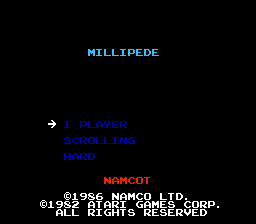
“We scour the Earth web for indie, retro, and niche gaming news so you don’t have to, drebnar!” – your faithful reporter
Aaron Greenbaum at Den of Geek investigates, what was the last NES game released? Covers multiple territories, and both licensed and unlicensed titles, although in that later case recent releases stretch the premise considerably.
This might be our first link to comingsoon.net, reporting that Nintendo has purchased the studio that animated those charming Pikmin shorts from back in the Wii-U era. [Reminders: first, second, third] Maybe we should save those links for Sunday? Maybe we’ll just slip them in again some week.
We have a bit of animosity towards Cracked for how they treated several of their prior writers, although that did eventually result in the creation of both Behind The Bastards and Some More News, which are creator-owned. Still, bad scene Cracked. Currently working for them (for how long?) is Eli Yudin, and they wrote a list of 15 Gloriously Weird Genesis games. It contains ToeJam & Earl, Wiz & Liz, Rocket Knight Adventures, The Ooze, and Mutant League Football, among others.

At Stone Age Gamer they have a series about Game Boy sequels to NES games, and in that Chris Randazzo writes about Blaster Master Boy, which is really a Game Boy port of Robowarrior, which was originally known as Bomber King in Japan, where it was a spinoff of Bomberman! The source for that information: the dusty back corners of my beleaguered brain.
Callum Bains at TechRadar brings us news that a number of Bethesda and id Software games are playable for free, for a limited time, to people in the Xbox Insiders program.
Jody Macgregor at PC Gamer tells us that that fan remake of Ocarina of Time will get new features, including unlocked frame rate and adjustable difficulty.






